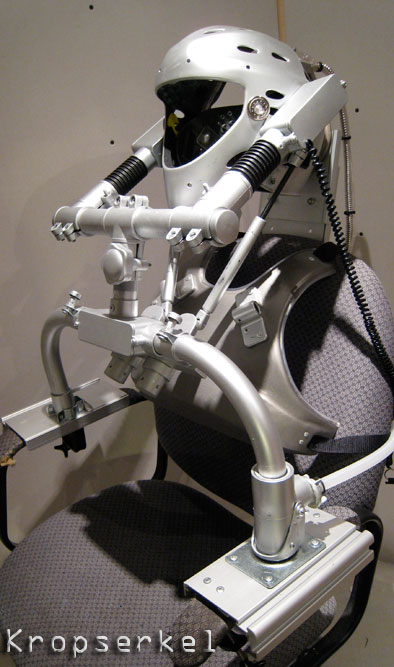
When Electric Entertainment contacted us about designing a prop to read and implant memories and little more, we were left to imagine what a real world, present day piece of technology would look like. The restraint helmet that we designed for Simulacrum was what originally attracted them, and we were happy to be able to revisit such a device, more fully fleshed out in this show.
Publicity and Production Stills

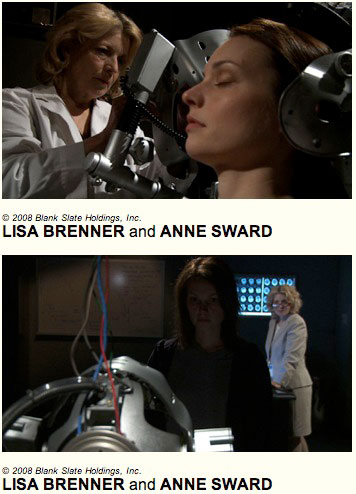

Video Clips of the device in use
Halo Machine sequence 1
Halo Machine sequence 2
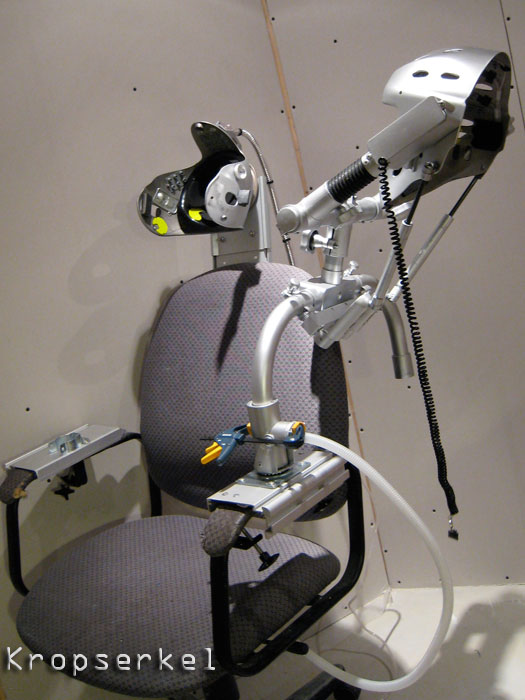
The prop was supposed to incorporate a restraint system to immobilize the subject. With carte blanche, I wanted to narrow down the design vision that the art director wanted. Star Trek? Matrix? Steampunk? Brazil? This was to be an FBI/CIA affiliate secret project, and the cannibalizing of parts technique worked perfectly with this design scenario.
The front portion of the helmet was to pivot on one arm of the chair and lock into the other side. Production provided measurements for the dentists chair that the piece would be mounted to on set, I had to make all of the fastening points modular, and the helmet positioning completely adjustable for elevation and angle.
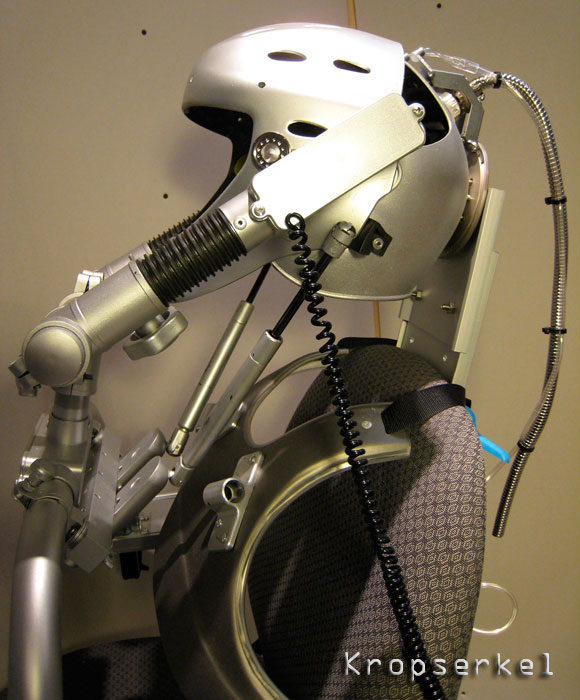
Here is a shot that shows the gas struts used to aid in the support of the front portion of the helmet. Also, I made a chest restraint panel in case the immobilized head didn't look sufficient on camera.
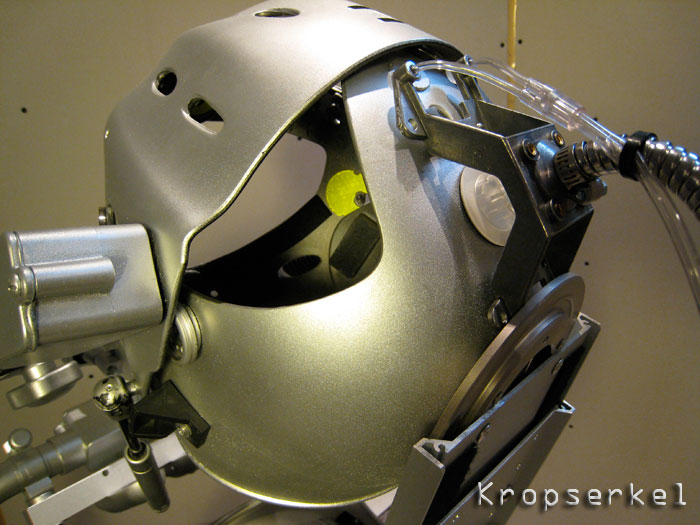
I wanted to give the helmet an unusual shape, and make the sections mate in a unique way, with spaces, and halves that looked just as interesting on their own as they did when closed together. I envisioned that the sort of information that the prop would be 'uploading' and 'downloading' to the subject wouldn't be wire power pulses, but something much more modern. I would like to believe that human brainwaves are enormous analogue signals, not compressible, and hopefully, DRM free.


The rear portion of the helmet cradled the cranium and left the actor's face open for the shot. Rather than a mechanical closure, magnets were used at three attachment points to control alignment.
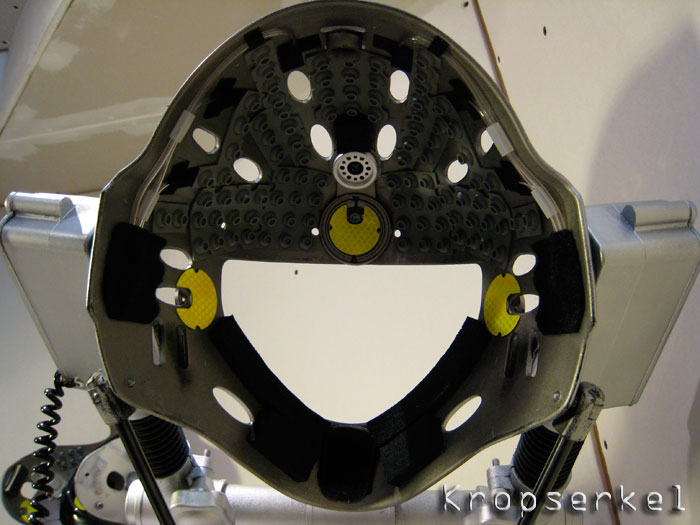
The interior of the front faceplate featured an abundance of rubber sensors. The system was imagined to be non-invasive and nothing would be piercing the dermis.
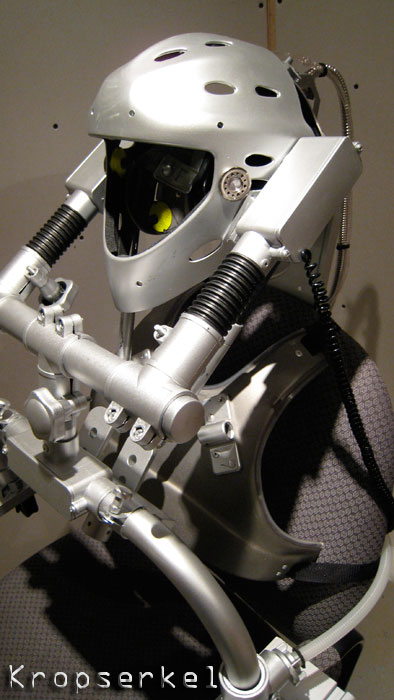
A Basis in Reality
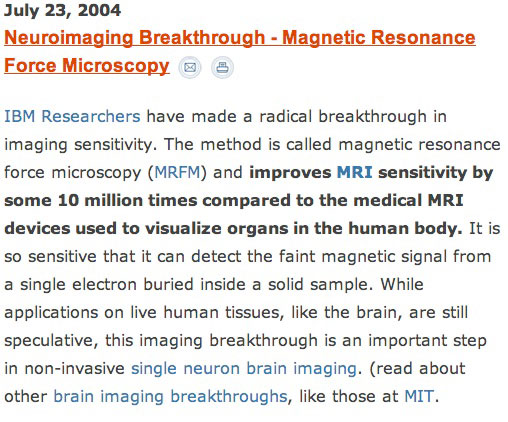
I've always been critical of conceptual design work in film, and knew that in order for the production to succeed, they would need to make this prop be believable, and have grounds in real science.
